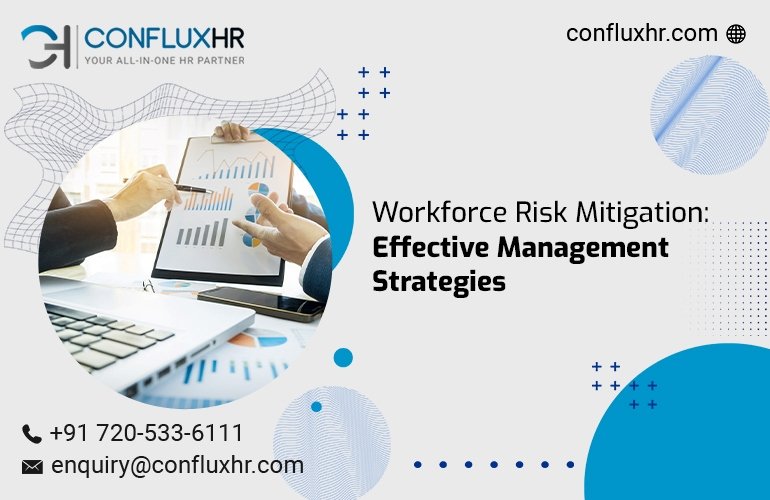In today’s dynamic and ever-changing business landscape, organizations face numerous workforce risks that can impact their operations, productivity, and overall success. These risks can range from employee turnover and talent shortages to safety hazards and compliance issues.
However, with effective management strategies in place, organizations can proactively identify, assess, and mitigate these risks, creating a resilient and thriving workforce. In this blog, we will explore key workforce risks and discuss strategies for effective risk mitigation.
Identifying Workforce Risks:
The first step in mitigating workforce risks is to identify and understand the potential challenges that exist within the organization. These risks can vary across industries and organizations, but some common areas to consider include:
- Employee turnover and retention: High turnover rates can lead to increased costs, productivity loss, and knowledge gaps within the workforce.
- Skills gaps and talent shortages: Rapid technological advancements and changing job requirements can create skills gaps and make it challenging to attract and retain top talent.
- Workplace safety hazards: Ensuring a safe work environment is crucial to protect employees from physical harm and reduce the risk of accidents and injuries.
- Compliance and regulatory requirements: Non-compliance with laws and regulations can result in legal consequences, reputational damage, and financial penalties.
- Employee engagement and morale: Low employee morale and disengagement can impact productivity, teamwork, and overall organizational culture.
Strategies for Effective Workforce Risk Mitigation:
A few strategies can keep your boat afloat in mitigating workforce risks. Check them out in the below pointers-
- Talent management and succession planning: Develop a robust talent management strategy that includes attracting, developing, and retaining top talent. Implement succession planning initiatives to identify and groom future leaders within the organization, reducing the impact of skills gaps and talent shortages.
- Training and development programs: Invest in continuous training and development programs to upskill employees and close skills gaps. Provide opportunities for professional growth and career advancement, enhancing employee engagement and reducing turnover.
- Proactive safety measures: Establish comprehensive safety protocols and provide regular training to employees to prevent workplace accidents. Encourage a culture of safety by promoting open communication, reporting mechanisms, and proactive hazard identification.
- Compliance and risk management systems: Implement robust systems and processes to ensure compliance with applicable laws, regulations, and industry standards. Conduct regular audits, maintain accurate records, and stay updated on evolving compliance requirements.
- Employee engagement initiatives: Foster a positive work environment by promoting open communication, recognizing employee contributions, and offering work-life balance initiatives. Regularly measure employee satisfaction and engagement levels to identify areas for improvement and take necessary actions.
- Crisis management and contingency planning: Develop contingency plans and response protocols to handle potential crises, such as natural disasters, cybersecurity threats, or public health emergencies. Regularly test and update these plans to ensure their effectiveness.
The Bottom Line
Workforce risks can have significant implications for an organization’s success, but with effective management strategies, these risks can be mitigated and transformed into opportunities for growth.
By identifying potential risks, implementing proactive measures, and fostering a culture of continuous improvement, organizations can create a resilient workforce that is equipped to navigate challenges and drive success. Remember, mitigating workforce risks is an ongoing process that requires consistent evaluation, adaptation, and a commitment to creating a safe, engaged, and productive workforce.


